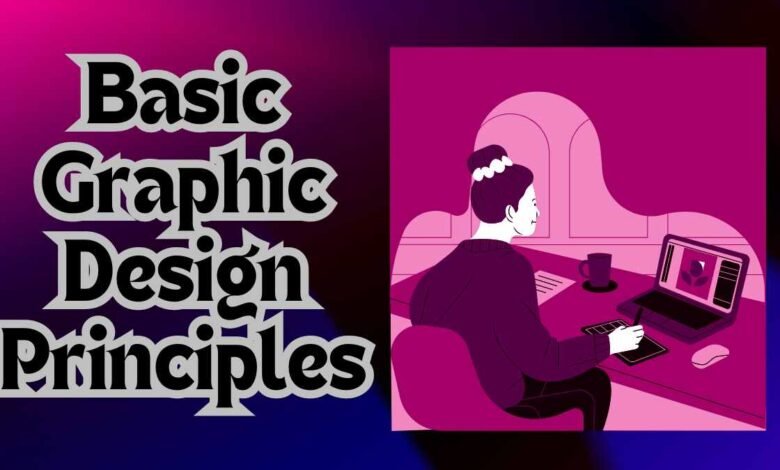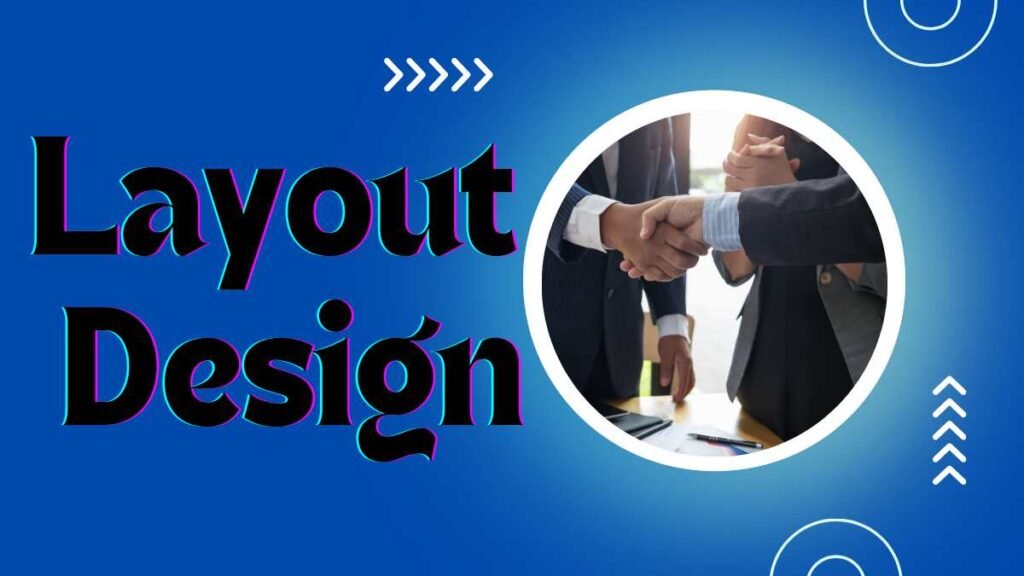Basic Graphic Design Principles: Ultimate Guide for Beginners

Basic graphic design principles , the websites we visit, or the advertisements we see, design plays a crucial role in how we perceive and interact with information. Mastering the basic principles of graphic design can be the difference between creating something visually appealing and something that misses the mark. In this guide, we’ll explore key concepts such as design composition, color theory, typography basics, visual hierarchy, and layout design to help you understand the fundamentals of great design.
Importance of Design Composition
At the heart of any successful graphic design is composition. A well-composed piece draws the viewer’s eye, conveys the intended message, and creates a sense of harmony. Poor composition, on the other hand, can result in cluttered, confusing, or disjointed designs.
Balance in Design
Asymmetrical balance, however, uses varying sizes and shapes to create an intentionally dynamic and visually engaging composition.
Contrast for Visual Impact
Contrast is essential for creating visual interest. By placing opposing elements—like light vs. dark colors or large vs. small shapes—next to each other, contrast allows key areas of your design to stand out, making it easier for the viewer to focus on important information.
Alignment for a Clean Look

The various elements in a design are visually connected by ensuring alignment.
Must Visit: Web Craze
Proximity for Clarity
For example, placing captions close to images or buttons near related text helps users easily understand how different parts of the design relate to each other.
Repetition for Consistency: Basic Graphic Design Principles
Repetition strengthens design consistency by using repeated elements such as fonts, colors, and shapes. This creates a cohesive look, particularly important in branding, where consistency builds recognition and trust with the audience.
Mastering Color Theory in Graphic Design
One of the most exciting aspects of graphic design is working with color. Color theory helps designers choose colors that are visually appealing and evoke the right emotions.
The Color Wheel
Designers use it to create color schemes that are harmonious and balanced. The main types of color schemes include: Typography is the art of arranging type in a way that is readable, clear, and visually engaging. It involves selecting fonts, adjusting spacing, and creating layouts that ensure the text is easy to read while adding aesthetic appeal.
Font Selection
Choosing the right font is critical in design. Sans-serif fonts (e.g., Arial) are cleaner and more modern, often used in digital design for readability. Display fonts are more decorative and are used sparingly. Often for headlines or emphasis.
Kerning, Leading, and Tracking
Typography also involves paying attention to the spacing between letters (kerning), between lines of text (leading), and between groups of letters (tracking). Proper spacing can dramatically improve the readability and overall appearance of a design.
Font Hierarchy
Establishing a clear hierarchy in typography helps direct the reader’s attention. Font sizes, weights, and styles are varied to achieve the distinction between headings, subheadings, and body text.
Visual Hierarchy
The viewer is guided through the content in order of importance. By the use of visual hierarchy in graphic design. It dictates the flow of the design, ensuring that the most critical elements capture attention first.
Color and Contrast
Bright colors and high-contrast elements often attract more attention. Designers use this principle to highlight important buttons or calls to action on websites and apps.
Spacing and White Space
Using white space effectively can make a design feel less cluttered and help direct the viewer’s eye to key points. Crowded designs with little space can overwhelm the audience, while spacious designs give room to breathe.
Layout Design

Elements such as images, text, and graphics are arranged on a page or screen in layout design. The layout impacts the overall flow and balance of the design. A strong layout ensures that all elements are organized. In a way that makes sense visually and functionally.
Grid Systems
Many designers use grid systems to create structured and balanced layouts. Grids consist of evenly spaced columns and rows, helping to align design elements precisely. This approach is particularly common in web design, where consistency and alignment are essential.
Focal Points
Every good layout has a focal point—a central element that draws the viewer’s attention. Whether it’s an image, a headline, or a call to action. The focal point should be prominent and positioned. Strategically within the layout to ensure it’s noticed first.
Flow and Navigation
In web design, the layout should guide users naturally from one section to another. Proper flow ensures that users can navigate through the content without feeling lost or confused.
Conclusion
Understanding and applying the basic principles of graphic design—composition, color theory, typography, visual hierarchy, and layout design—will help you create designs that are not only visually appealing but also functional and effective. These foundational skills are essential for any designer, whether you’re creating a logo, designing a website, or working on a marketing campaign.
FAQs
What is the most important graphic design principle?
All design principles are important. But composition is often considered. The foundation since it dictates how all the elements fit together.
How can I improve my use of color in design?
Study color theory and experiment with different color schemes to see how colors interact with each other and impact the overall mood of the design.
What are serif and sans-serif fonts?
Serif fonts have small decorative lines at the ends of characters, while sans-serif fonts do not. Serif fonts are often used for print. While sans-serif fonts are popular in digital design.
Why is white space important?
White space helps reduce clutter, making designs easier to navigate and more visually appealing.
What is the purpose of using a grid in layout design?
Grids help create a structured, balanced. And consistent layout, ensuring that elements are aligned and spaced evenly.
Read More: Cyber Security in the Government Sector




